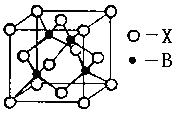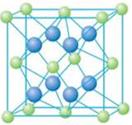Passage Two
| When an invention is made, the inventor has three possible courses of action open to him: he can give the invention to the world by publishing it, keep the idea secret, or patent it. A granted patent is the result of a bargain made between an inventor and the state, by which the inventor gets a limited period of monopoly (垄断) and publishes full details of his invention to the public after that period terminates (终止). Only in most exceptional circumstances is the life-span of a patent extended to alter this normal process of events. The longest extension ever granted was to Georges Valensi: his 1939 patent for color TV receiver circuitry was extended until 1971 because for most of the patent’s normal life there was no color TV to receive and thus no hope of reward for the invention. Because a patent remains permanently public after it has terminated, the shelves of the library attached to the patent office contain details of literally millions of ideas that are free for anyone to use and, if older than half a century, sometimes even re-patent. Indeed, patent experts often advise anyone wishing to avoid the high cost of conducting a search through live patents that the one sure way of avoiding violation of any other inventor’s right is to plagiarize a dead patent. Likewise, because publication of an idea in any other form permanently invalidates (使无效) further patents on that idea, it is traditionally safe to take ideas from other areas of print. Much modern technological advance is based on these presumptions of legal security. Anyone closely involved in patents and inventions soon learns that most "new" ideas are, in fact, as old as the hills. It is their reduction to commercial practice, either through necessity of dedication, or through the availability of new technology, that makes news and money. The basic patent for the theory magnetic recording dates back to 1886. Many of the original ideas behind television originate from the late 19th and early 20th century. Even the Volkswagen rear engine car was anticipated by a 1904 patent of a cart with the horse at the rear. |
The passage is mainly about ______ .
A.an approach to patents
B.the application for patents
C.the use of patents
D.the access to patents
参考答案:D
解析:主旨题。文章一开头就提出一项发明可以有三种处理方法,其中之一是申请专利。然后作者用文章的其余篇幅介绍专利意味着什么、专利到期后如何,最后又指出许多专利的新观点其实都是很早就开始有的旧观点。因此可知D符合。A很容易被误选,A的意思是这篇文章主要是讲“申请专利的一种方法”,这显然是不对的。


